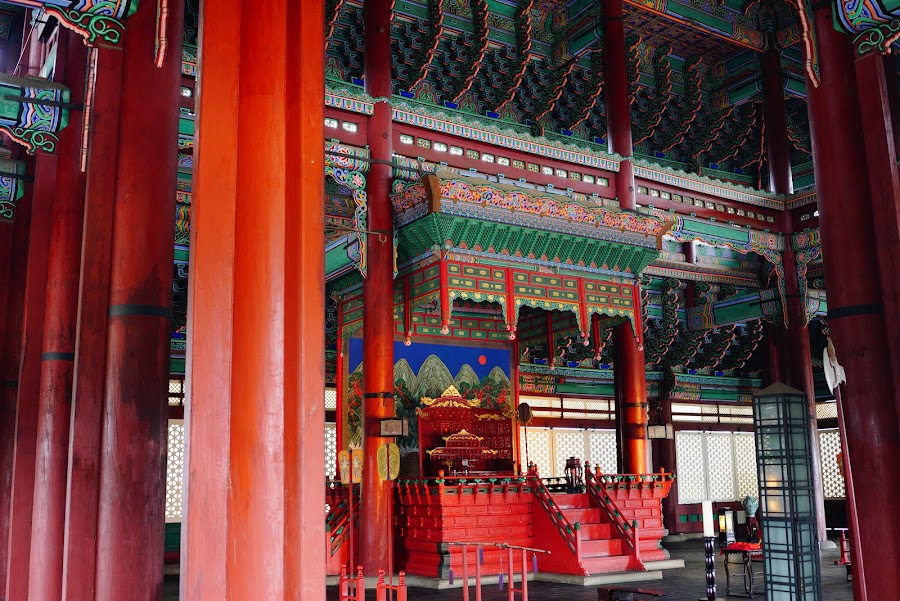
Drumbeat over this gorgeous byeoljihwa dancheong
One of the things that always stroke me about Korean temples and palaces is the beauty of their colors and intricate patterns. It's the aqua contrasting with shades of red, yellow, white and black, sometimes finished with a blue touch. So pretty, it often leaves me with a neck pain from staring at the roof over long periods of time.
Turns out this art is very very old, full of symbolism and called Dancheong 단청 which literally means cinnabar and blue-green. Dancheong 단청 is based on 5 basic colors, each representing one element: blue (east), white (west), red (south), black (north) and yellow (center). The patterns can also be used to reflect social status and rank, which is of uttermost importance in Korean society today, but even more so already in the Goryeo period (918-1392) when the first writings about Dancheong appear.
Dancheong can be further classified in four main types... Which one is your favourite?:
- Morucho: Pattern used to paint the ends of supporting beams with simple figures like water lily, pomegranate, bubble, feather...
- Byeoljihwa: Traditional storytelling , placed between two morucho. The patterns consist of holy animals (dragons, horses, lions, cranes), specual plants called sagunja (plum, orchid, chrysanthemum and bamboo) and scenes of Buddha sutras.
- Bidanmunui: Diverse coloring with geometric patterns, typically applied in temples.
- Dangdongmunui: Single flower, animal, geometric or pattern in one section.
One example of morucho.

The scene behind the throne is an example of byeoljihwa.

This beautiful roof, an example of bidan munui with some dangdong munui on the corners.
...I think mine is the last one!






















No comments
Post a Comment